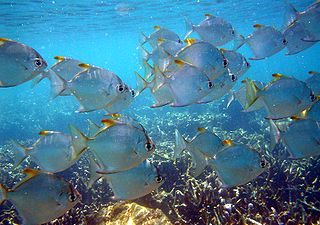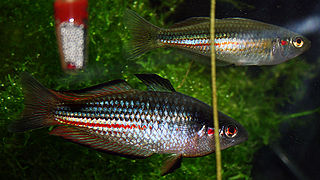Large, flashy, uniquely-shaped and active, Silver Monos, Monodactylus argenteus, always draw attention when seen for the first time. But there are many misconceptions concerning their proper care, and new owners often become frustrated with them and move on to other interests. However, when their unique needs are met, Monos are quite hardy and make for spectacular exhibits. A group I cared for at the Bronx Zoo, housed with Mudskippers, Fiddler Crabs and Banded Archerfish, proved so interesting that they rivaled neighboring Leaf Insects, Hornbills and Tapirs for visitors’ attentions.
Description
The Mono’s silvery coloration shimmers under light, and is nicely offset by yellow or black fin tips and the jet-black stripe that runs along the edges of the dorsal and anal fins. The body is flattened and disc-shaped, and the sturdy dorsal and anal fins are much-elongated. Silver Monos are powerful swimmers, well-able to buck the strong currents common to the tidal rivers and coastal mangroves that they frequent. If given enough space and a proper diet, they can reach 9- 10 inches in length, but most in the pet trade top out at half that. Read More »
 That Fish Blog – Aquarium Advice and Information
That Fish Blog – Aquarium Advice and Information





